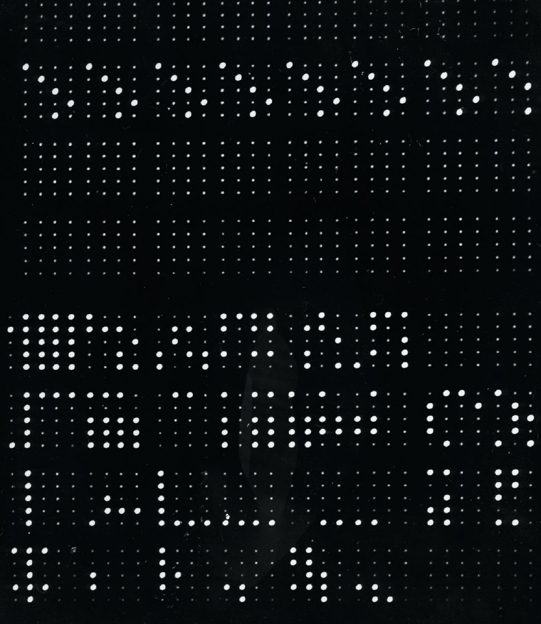1946
Williams Tube
Frederic Calland Williams (1911–1977), Tom Kilburn (1921–2001)
The Williams tube (sometimes known as the William–Kilburn tube), was the first all-electronic memory system, and the first that provided for random access, meaning that any location of memory could be accessed in any order.
The tube was a cathode-ray tube, such as what might be used in a World War II radar display, but modified so that dots displayed on the screen could be read by a computer. The early Williams tubes stored data one binary digit—a 0 or a 1—at a time in a rectangular array, typically 64 by 32. Developed at the University of Manchester by Frederic Williams and Tom Kilburn, the tubes were superior to the mercury delay line memory that had been used on the EDSAC and UNIVAC computers, because any bit could be accessed instantly. The bits in the delay lines, in contrast, could be read only when they had progressed through the mercury to the end of the line. But both the Williams tube and the mercury delay lines shared the property that they needed to be continually refreshed, much as do modern dynamic random access memory (DRAM) chips. Because the bits consist of stored energy that can dissipate, each bit must be continually read and then rewritten.
The IBM 701 computer used 72 Williams tubes to store 2,048 36-bit words; this electronic memory was supplemented with a spinning magnetic drum that could hold roughly four times as much memory but was much slower to access. The Williams tubes were not terribly reliable, though, and the 701 would reportedly run for only 15 minutes before it would crash due to a memory error. Indeed, the tubes were so unreliable that the Manchester Small-Scale Experimental Machine (SSEM), nicknamed Baby, was built specifically for the purpose of testing Williams tubes.
The MIT Whirlwind computer, first operational in 1949, was originally designed to use a modified Williams tube that dispensed with the need to refresh by using a second electron gun called a flood gun; the same approach would be used nearly three decades later in storage-tube displays, such as graphics terminals and oscilloscopes used in electronics labs to monitor circuits. But the modified Williams tubes cost $1,000 each and had a lifetime of roughly one month. Beset with the problems caused by these storage tubes, Whirlwind’s director, Jay Forrester (1918–2016), invented core memory as a replacement.
SEE ALSO Delay Line Memory (1944), Manchester SSEM (1948), Core Memory (1951)
This close-up view, c. 1948, reveals dots (1s) and spaces (0s) on the face of a tube.
